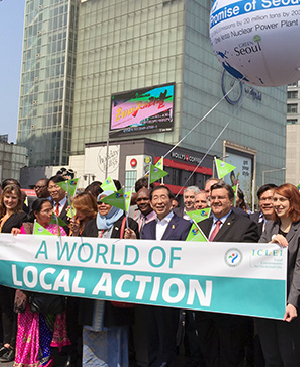Shenzhen International Low-Carbon City is situated in Pingdi Sub-District of Longgang District, and has a planned area of 53.4km2, governing 9 communities with a population of about 170,000.
The development orientation of the Low-Carbon City is to become a national comprehensive demonstration district of low-carbon development, and to explore a new urbanization road by renovation and transformation as well as industry transformation and upgrading to realize rapid growth in quality and gradual reduction of carbon emissions in the urban built up areas. By 2020, the International Low-Carbon City is expected to have a gross GDP of RMB 24.5 billion, per capita carbon emission intensity of less than 5ton/person, and carbon emission per RMB 10,000 GDP of less than 0.32 ton, reaching the average level of EU countries of the same year.
The low-carbon design principles were adopted in the planning of the Low-Carbon City. There are several features of the low-carbon planning as follows:
1. Integrated Industrial and Urban Development
Construct a special structure of ‘One Axis & One Belt, One Core with Three Centers, Cross Development, and Cluster Layout’to enhance the concentration of industrial functions, living and services. Job-housing balance. Strengthen the composite clustering of different industrial functions with life and service. Green space. Form an open ecological system considering the requirement for ecological protection, ventilation and heat dissipation, flood and waterlogging control, and geological disaster prevention. 50% of land will be ecologically used for mountains, forests and rivers.
2. Low Carbon Transportation
Form a perfect transportation system with highways and metro lines in the periphery, as well as preferred public transportation, well-aligned main lines and secondary lines, and improved walkways in inner rings, to effectively unify clusters, blocks, stations development, driving and walking distances.
3. Low Carbon Municipal Engineerging
Establish intelligent municipal service facilities to use distributed energies and renewable energies in a graded way, implement low impact development of wastewater treatment, reuse of reclaimed water, common pipes and trenches, and permeable pavements.
4. Green Building
Promote the application of green building materials, low-carbon technologies and products. New buildings should 100% meet the green building standard, while existing buildings will be renovated to meet the low-carbon and green standard.
5. Low Carbon Community
By taking a low-carbon community as basic unit, guide low-carbon industrial communities, living communities, and public service communities to create ecological and livable low-carbon communities with premium services and convenient transportation.
6. Low Carbon Industry
Principles for industry selection: low carbon emission, large development potential, little impact the ecological environment, strategic industry, high relevance.


